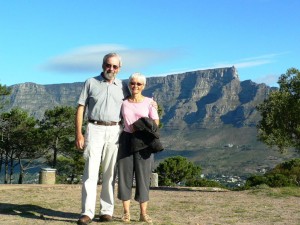Cape Town
Saturday, April 28th, 2012On our last day in South Africa we decided to pay a short visit to the town of Cape Town. We passed the one side of the House of Parliament and the National Library Cape Town branch. We visited St George’s Cathedral where in 1986 Desmond Tutu hammered on its doors symbolically demanding to be enthroned as South Africa’s first black archbishop. Three years later, he “began” the last days of apartheid by leading 30,000 people from the cathedral to the City Hall in a peaceful demonstration.
We visited the Company Gardens. Initially they were established in 1652 to supply fresh greens to Dutch East India Company ships traveling between the Netherlands and the East. At the end of the 1600’s they were turned into a botanical garden with ponds, lawns, landscaping and oak-shaded walkways. It was while walking along these paths in the late 1880’s that Cecil Rhodes first plotted the invasion of what is now Zimbabwe. He also introduced the small furry North American grey squirrels!
We ended our day by driving up Signal Hill with its good views over Table Bay, the docks, the city (including the 2010 World Cup Soccer stadium), and back to Table Mountain.
We had a glorious time during our two weeks. As you can tell we spent most of our time in nature and therefore, met almost no South African people. We also missed many historical, famous sites. Maybe next time!
- flower vendors near the railway station
- Queen Victoria
- National Library
- St George’s Cathedral
- interesting architecture on city street
- Company Gardens
- Table Mountain from Company gardens
- look familiar?
- City and Devil’s Peak from Signal Hill
- Cape Town
- 2010 World Cup Stadium
- Lion’s Head and Twelve Apostles
- together on Signal Hill with Table Mountain in background






























































































































































